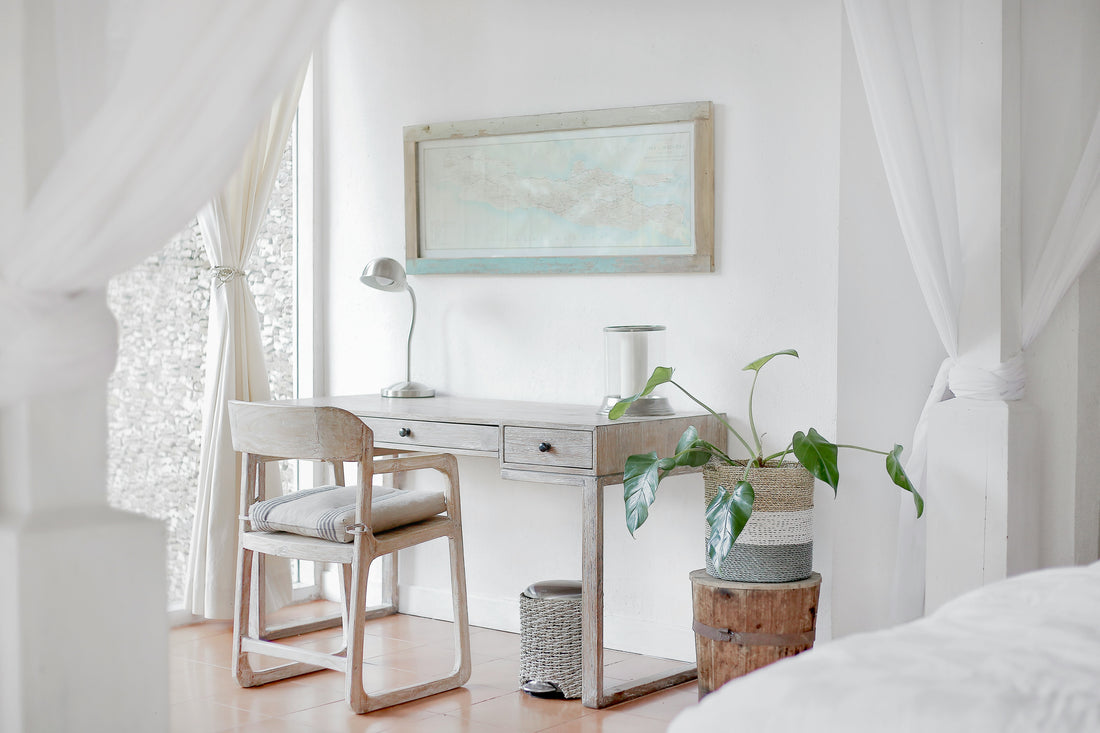
How to Decorate a Small Room
Share
Best Small Room Decor?
Best Small Room Decor Ideas
1. Choose Multi-Functional Furniture
Multi-functional furniture saves space and adds versatility, making it ideal for small rooms. Look for pieces like a sofa bed, a storage ottoman or a coffee table that doubles as a storage unit. Use a foldable desk that can be tucked away when not in use or a dining table with extendable leaves.
 Storage Stool and Seat by Daals
Storage Stool and Seat by Daals2. Utilise Vertical Space



A minimalist approach reduces clutter and focuses on essential, high quality pieces, making a small room feel more open. Stick to a neutral colour palette and select a few statement pieces. Choose furniture with clean lines and avoid over decorating with accessories. Less is more!

Foldable and nesting furniture is perfect for small spaces because they can be tucked away when not in use. Consider folding chairs, tables or nesting side tables that can be stacked together. Wall mounted fold out desks are great for small home offices or study areas.
 Oak Furnitureland Nest of Tables
Oak Furnitureland Nest of TablesLow profile furniture creates openness and makes the ceiling appear higher, giving the illusion of more space. Opt for low sofas, chairs and coffee tables with slim legs. Avoid bulky furniture; instead, choose pieces with sleek, clean lines and minimal detailing.

A bold focal point can draw attention and distract from the room’s size, making it feel more intentional and stylish. Add a statement piece like a bold area rug, an oversized artwork or a vibrant accent wall. Keep the rest of the decor simple and cohesive to prevent the space from feeling crowded.

Heavy curtains can make a small room feel closed in. Sheer curtains let in natural light while still providing privacy, creating an airy and spacious feel. Choose light, sheer fabrics like linen or voile in neutral colours. Hang them close to the ceiling and let them drop to the floor to create the illusion of height.

Built-in furniture like shelves, benches and desks can be customised to fit the specific dimensions of a small room, therefore maximising every inch of space. Consider built-in bookshelves around doors, windows or corners. Use built-in benches with hidden storage for seating and practicality in dining areas or entryways.

A cohesive colour scheme creates a seamless look, which can make a small room feel larger and more unified. Stick to a limited colour palette (2-3 colours) for walls, furniture and decor. Use varying shades of the same colour to create depth and interest without overwhelming the space.

Wall mounted lights, such as sconces or swing-arm lamps, free up floor and table space while providing functional lighting. Install wall sconces above bedside tables or use swing-arm wall lamps in reading corners. They add style and light without the bulk of floor or table lamps.
13. Layer Textures Instead of Patterns
In a small room, too many patterns can be visually overwhelming. Layering different textures creates depth and interest without clutter. Use a variety of materials such as linen, velvet, wood, metal and wool in similar tones. For example, a soft rug, a velvet cushion and a woven throw can add richness without overpowering a small space.

Floating desks and shelves keep the floor clear, making the room feel less cluttered and more spacious. Install a floating desk in a corner or by a window for a compact home office. Floating shelves can be used for books, decor, or kitchen storage.

16. Add Greenery with Vertical Plants
Plants add life and freshness to a room but potted plants can take up floor space. Vertical plants save space while providing the same benefits. Use hanging planters, wall mounted plant shelves or a vertical garden to bring greenery into a small room without using valuable floor space. 
Decorating a small room requires thoughtful planning and clever design choices. By focusing on multi-functional furniture, utilising vertical space, keeping the colour scheme cohesive and incorporating mirrors and smart storage, you can make a small room feel more spacious, functional and stylish. Remember, the key is to balance style and practicality to create a cosy and inviting space that feels just right.
Next read: Small Room Colour Tips

